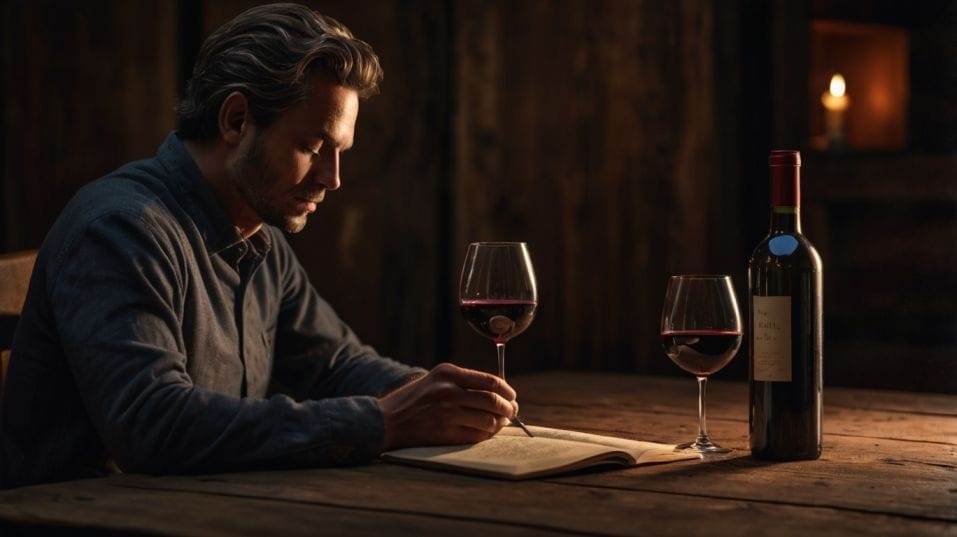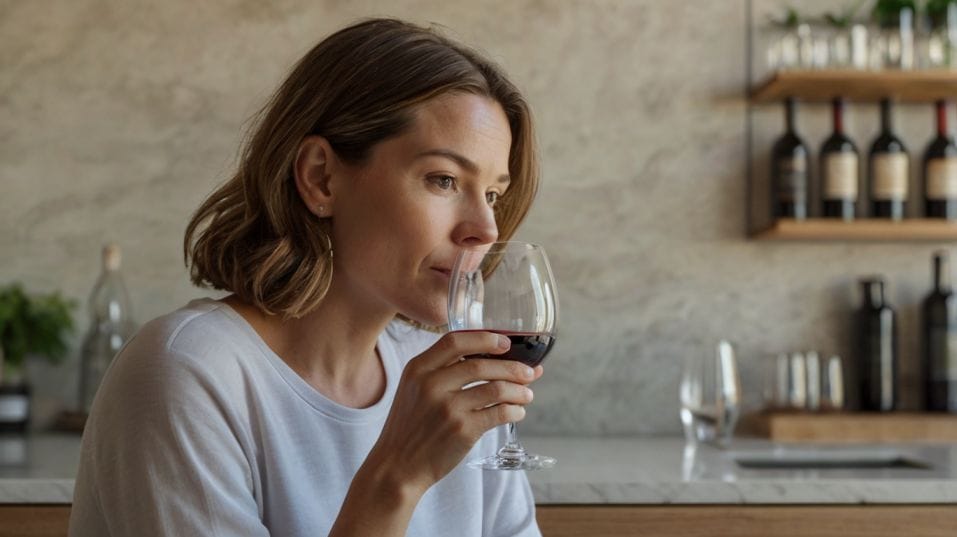The Difference Between Sipping and Gulping
Learn why sipping—not gulping—transforms how you experience wine. Taste better, build confidence, and discover what you actually enjoy.

Ever wonder why one glass of wine can taste like a revelation to one person and barely register to another? It’s not about expertise — it’s about how you drink. If you gulp, you gloss over the details.
If you sip, you unlock them. For anyone curious about wine, learning to slow down is the first and most powerful step. The difference isn’t subtle. It changes everything about how you taste and what you remember.
What Really Happens When You Sip
Sipping isn't about etiquette. It's about precision. When you sip, you control how the wine moves in your mouth. You're not just “tasting” — you're mapping.
A proper sip lets the wine touch all areas of your palate: the tip of the tongue where sweetness registers, the sides where acidity flares, and the back where tannin and bitterness settle.
This simple act helps decode the wine’s structure, balance, and intensity — the exact things that define how good it really is.

How Sipping Unlocks Flavor
Professional tasters aren't born with special senses. They develop their skills by giving wine time to reveal itself. Sipping allows that.
When you hold the wine in your mouth for a few seconds, it warms slightly, releasing volatile aromas. Swirling it gently across your tongue engages different taste receptors.
And when you exhale gently through your nose after swallowing — a move called retronasal breathing — you pick up subtleties you’d otherwise miss: dried herbs, crushed stone, or a whisper of smoke.
It doesn’t require theatrics. You don’t need to slurp or gargle. But you do need to pay attention. Not to impress anyone, but to learn.
Each sip becomes a data point in a growing sensory memory bank — and over time, that bank becomes your best tool for choosing wines you actually love.
Gulping Is the Default — and the Problem
We’re taught from a young age to drink liquids quickly. Thirst, social cues, even advertising push us to knock things back.
It’s not unusual to see someone pour a generous glass of wine and treat it like a soda. It’s casual. Comfortable. And completely out of step with how wine is designed to be enjoyed.
Why Gulping Misses the Point
Wine is layered. It evolves. Its character changes from the first sip to the last, especially when it's been properly stored and served.
Gulping flattens those layers. You miss the lift of acidity, the flicker of spice, the way texture moves across your palate.
You’re left with a blur of impressions — “smooth,” “dry,” maybe “fruity” — but nothing deeper. You drink a glass, and twenty minutes later, can’t recall what made it interesting.
That might not matter if your only goal is to unwind. But if you're exploring wine with purpose — to enjoy it more fully, to build knowledge, to find what fits your taste — gulping works against you.
Sipping Builds Confidence
Wine can be intimidating. Labels are cryptic, flavors are abstract, and tasting notes sometimes read like poetry written by botanists.
But sipping cuts through all of that. Because when you taste slowly, you start to anchor those abstract ideas in your own experience.
How Sipping Sharpens Your Palate
You begin to notice patterns: how cool-climate wines often feel more taut and linear, or how oak shows up more as texture than as flavor.
You learn that you prefer crisp, mineral whites over buttery ones — or that certain reds feel too heavy on a hot day, no matter how expensive they are. These insights don’t come from books. They come from your own mouth.
More importantly, you stop needing permission to like what you like. The more you sip with attention, the more fluent you become in your own palate.
You can walk into a wine shop, talk to a sommelier, or browse a dinner menu without second-guessing. That confidence doesn’t come from memorizing facts. It comes from firsthand knowledge — gained one sip at a time.
Sipping Is a Lifestyle Shift
At its core, sipping is a mindset. It’s about creating space — between the pour and the swallow, between the noise and the nuance.
It encourages presence over pace. Even just taking a few seconds with each sip can shift your relationship to the glass in front of you.
The Ripple Effect of Slowing Down
It also reshapes the environment around wine. Suddenly, drinking becomes less about volume and more about depth. A single glass can last the length of a good conversation. A bottle becomes something you explore, not just consume.
You start choosing glasses, temperatures, and even food pairings more deliberately — not because you're chasing perfection, but because you’ve learned how these details affect the experience.
And here’s the part that surprises most beginners: sipping makes wine more fun. When you actually notice what’s happening in the glass, every bottle becomes a discovery.
You start remembering favorites, connecting regions with sensations, and associating wines with moments. It stops being about what you're “supposed” to drink and starts being about what actually brings you pleasure.
Final Thoughts
Gulping is easy. Sipping takes intention. But that small shift changes the entire arc of your wine journey.
It slows things down just enough to let you experience more — more flavor, more texture, more personal insight. And the more you sip, the more you build fluency in the language of wine.
So next time you pour a glass, don’t rush it. Take a full, thoughtful sip. Let it sit on your tongue. Breathe through your nose.
Pay attention — even just for five seconds. That one simple move opens the door to a deeper, richer, and more confident way of drinking. Try it tonight. You don’t need the perfect bottle. You just need the right approach.




